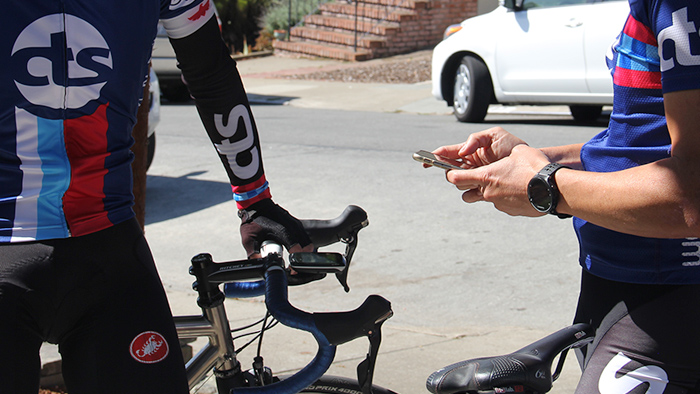I took a vote around the room at TrainingPeaks University about the greatest frustrations of coaches. The highest vote went to “athletes not communicating or writing notes about their workouts.” Clearly, effective communication between coaches and athletes is a hot-button issue.
Coaching used to be a “side” job in addition to my full-time career in business, but now I find myself immersed as a full-time coach trying to find the ultimate balance (what does that word even mean?) of lifestyle, working on business growth, being available to my athletes, my own training, rest and social time.
Because of my background in business consultancy, let’s call me a spreadsheet and vision defining enthusiast. To get the most out of your athletes with effective communication, I suggest using a number of easily accessible but often underutilized tools.
If you are a self employed coach, you run a small business, or you are an overworked coach with the desire for more balance—this article is for you.
Write Down Your Priorities
Coaching is an all encompassing role (It doesn’t feel like work to me, so I don’t refer to it as a job), it attracts passionate, driven and dedicated individuals. Coaches often have the tendency to go “all in” with athletes. But does this “all in” approach actually work? A few years down the road when that coach is burnt out and overworked—what does their coaching business look like then?
I feel that to get the most out of your athletes, you have to first take a look at yourself and the way you currently operate. Is it sustainable to be on call seven days per week, early hours and late nights? Are you and your family happy to continue compromising your quality time? Each of your ideal lifestyle frameworks will look different, depending on your priorities. Start there.
When considering your week, what are your priorities? Write them down in order of importance, and be honest with yourself.
What things are non-negotiable? Is it training a certain amount of hours per week? Do you want to make a point of shutting off the computer at 6 p.m.? is it making sure your weekends are free or you have Mondays completely off? Will limiting the number of face-to-face coaching sessions you have per week keep you balanced? Write all of these ideals down.
Now that you have a framework for yourself, it’s time to get into some effective action steps you can take with your athletes to get the most out of them. But remember, it starts with you.
The Four Steps of Effective Athlete Management
1. Clearly communicate your process and expectations.
If you have athletes texting you at 4:30 a.m. or calling on a Sunday and it annoys you, my first question for you is: Have you communicated to them precisely when it is or isn’t okay to get in touch with you? Or provided them with the best way to get in contact with you?
On the flip side, do you have athletes who say, “Oh I didn’t want to bother you,” when they really should get in touch and communicate an update?
Rather than put out spot fires when these situations occur, I suggest starting your coaching relationship with an athlete the way you wish it to continue.
We need to remove as many barriers as possible to encourage communication. There are a few factors to consider;
- ease of access & communication
- what times of day/days of the week is it most valuable for you to be available for athletes?
- what style of communication suits your athlete/s. It will likely be different across the board, so find out if they prefer email, TrainingPeaks notes, phone, Skype, texting or face to face.
- how to be approachable for them
- how to build a solid rapport with your athletes
Action Step: Create a document that outlines the when, what and how of communication to include as introductory content for each new athlete.
2. Know your coaching style
Again, we start with YOU. You must identify your own coaching style and, even more importantly, how it’s perceived and received by your athletes. If an athlete comes to you requiring tough love and a direct and data-driven approach but you are more laid back, empathetic and intuitively driven—then you have a problem. This mismatch of needs will not enable you to get the most out of your athletes. And of-course, the opposite is true too.
Now you have a decision to make:
- Adjust your style OR
- Recommend athletes to another coach who will suit their needs better.
Action Step: Run a feedback survey with your current athletes, with questions relating to your coaching style, how it’s perceived, received and how it works or doesn’t work for them.
3. Give them a guide for post training notes & communication
Sometimes the reason your athletes don’t write notes or communicate effectively is because they simply don’t know how, what, when or why to do it.
Providing them with a guide or examples of effective post-training notes is a great place to start. Each coach will want different quantitative data, so consider your coaching style and athlete demographic and start brainstorming the pieces of information that are valuable for you.
- Do you want to know about their mood before, during or after the session?
- What about their level of focus?
- Perhaps how they perceived the prescribed effort?
- Was it their paces, power or times for a given interval?
Once you have an outline of the most important points for an athlete to report back on, provide them with this guide. This helps avoid lengthy stories about missing the bus, heavy traffic, the person in the lane next to them and other irrelevant information!
Another helpful thing is to provide real world examples of good post training notes that are valuable to you as their coach.
Action Step: Provide post training notes guideline and real world examples to your athletes.
4. What are your athletes values?
Let’s say you’re not too keen on changing your coaching style, but you’re willing to compromise in a few areas to help a particular athlete. Knowing what they value from your coaching skills and expertise is a great way to know how you can get the most out of them. Ultimately, you can use this as a retention tool as well. Even if your coaching style matches their needs, addressing their values helps you recognize the areas you can really focus on to deliver results for them. A word of warning: be careful where you set the bar. Always under promise and over deliver.
Through your pre screening process you might want to find out;
- Do they value data analysis, or do they get frazzled by numbers?
- Do they need encouragement, or are they self motivated?
- Do they want to learn about the science of their program from you, or are they happy to follow along without understanding the scientific background?
Action step: Adjust your pre-screening questionnaire to include information about their values and needs from you as a coach.
In summary, to get the most out of your athletes you must first understand yourself, your style and your own expectations of athletes. Next, you must be open in your communication so your athletes know your style and exceptions too. And finally, understand your athletes values and needs so you can adjust your approach as required.



